Have you ever been overwhelmed when considering how complex and challenging your field service management is? With missed appointments, inefficient routing, and the mad scramble to keep information organized, it’s no wonder. It only gets worse as your customer base grows, and you are not the only one who has had this experience.
The average field service technician spends 30% of their time on non-billable activities that are outside their control, such as travel and <thing>. What if you could have more control over your field operation? With activity tracking software, you will be able to gain a better sense of where your technicians are at any point in time and assign jobs far more efficiently.
But what exactly does it mean? How does activity tracking help you optimize your field operations? Don’t worry! In this article, we’ll explain it all. Let’s take a look at some of the ways that activity-tracking software can help streamline your operations.
What is activity tracking in field service management?
Activity tracking is a mode by which the movements and activities of field personnel are tracked and stored during work in real-time. It helps clarify exactly where your technician is, and what they are doing and provides a historical timestamp of when it was done.
But it doesn’t end there. With activity tracking, you gain complete visibility and transparency into field operations, allowing you to optimize fleet management. It lets you capture valuable data on every movement, from location job progress to resource utilization and inventory management.
There are three main different types of activity tracking in field service. Each brings visibility to various aspects of your business. Let’s take a look at the different types of activity tracking to get a better understanding of how they improve efficiency, transparency, and profitability for your field service business.
Different types of activity tracking in field service management
Activity tracking in field service management (FSM) goes beyond tracking where your technicians are. It also captures valuable information that helps you unlock insights that really matter—allowing you to transform your business.
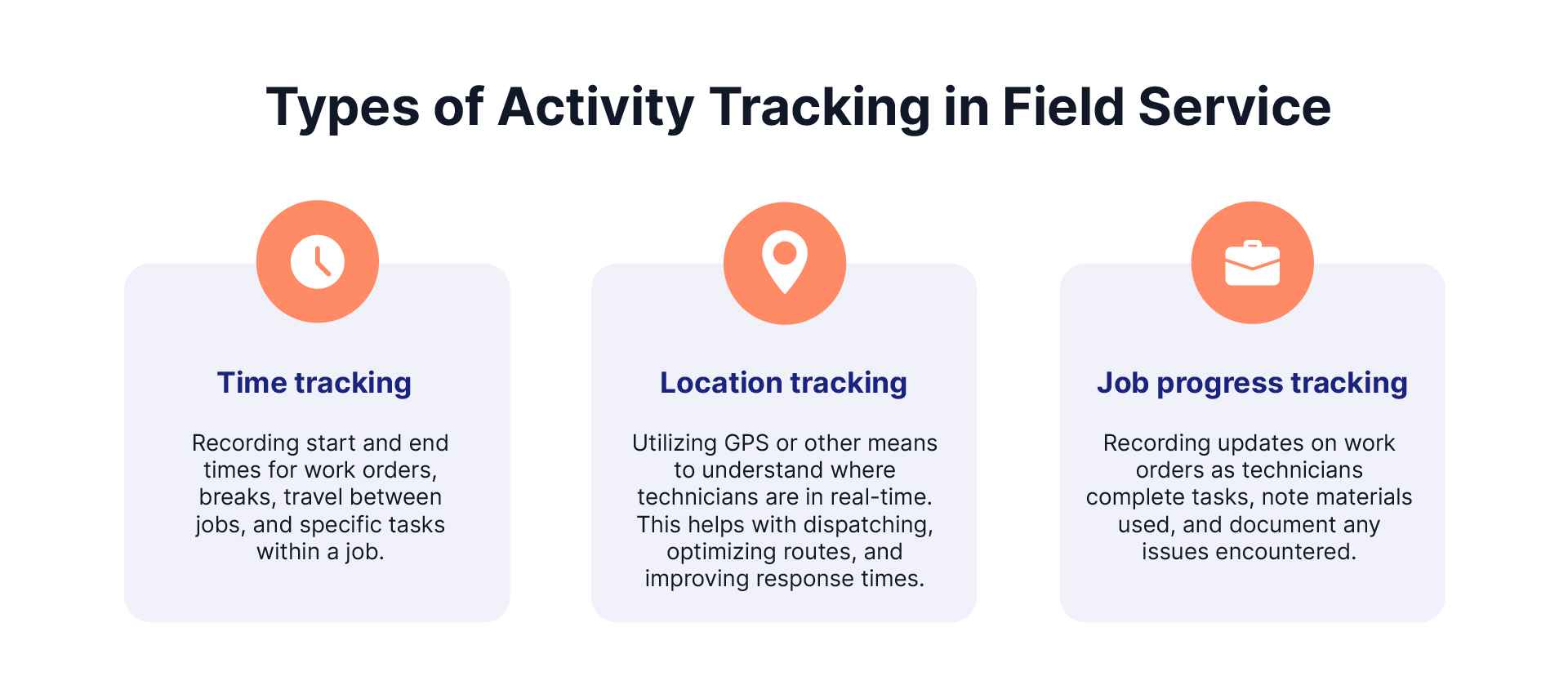
Time tracking:
Have you ever felt like your technicians are always running behind? Are they struggling to satisfy your customers? As a business owner, that feeling can be overwhelming. What you need is a tool to help with time management.
Activity tracking software (ATS) is that tool. By implementing ATS, you gain a clearer picture of your technician’s day. It sounds like a dream, right? It’s not. Imagine the benefits that come from increasing efficiency and productivity and delivering services on time.
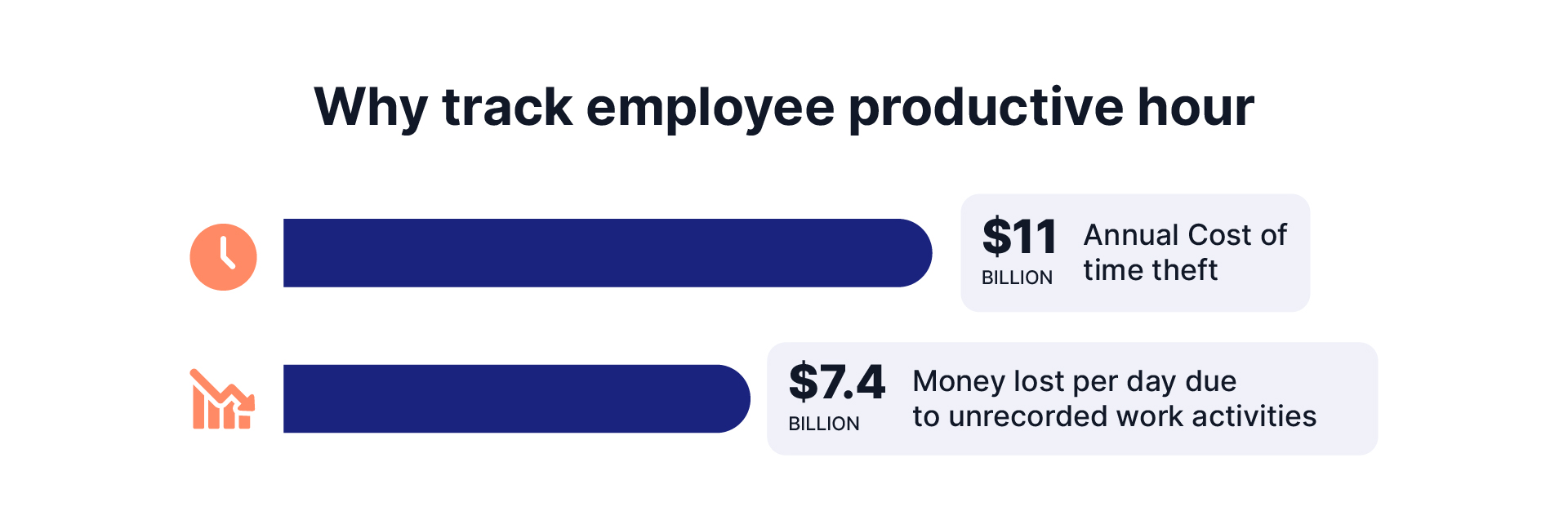
Technician time tracking does that for you. Time tracking is the practice of recording how your technicians spend their time throughout the day. It clearly shows how much time your technician spends on every specific task—fostering visibility and transparency.
With time tracking, you can track every work order from start to finish. You can know exactly how much time was spent on each job. Help you identify job gaps and skill gaps that exist and draft strategies to bridge them.
Companies that implement time tracking systems report a 22% increase in productivity.
Let’s be honest! traffic jams and bathroom breaks are unavoidable in any field service job. But what matters is the amount of time spent on them. Technicians taking longer breaks or more frequent breaks during jobs can have a real impact on productivity. So, keeping an eye on it is crucial.
With efficient time tracking, you get visibility into time spent on specific tasks, and it lets you dive deep and see precisely how long each job takes. By identifying these “time sinks,” you can streamline processes, boost efficiency, and get more done in less time.
Location tracking:
Have you ever felt like your technicians vanish when they are needed most? A new call comes in and you find yourself on the phone with a customer—struggling to dispatch a technician. But where are they? Stuck in traffic? Taking an extended lunch break? All you know is that your customer is getting annoyed, and you need to dispatch someone now!
Dealing with this on a daily basis can suck the life out of you. You need a tool that can tell you where your technicians are at any given time. Location tracking helps you to accurately track technicians in real-time and know where they are and what they are up to.
By dispatching the closest and most qualified technician to a job site, location tracking can improve first-time fix rates by 10% or more.[Source: Salesforce]
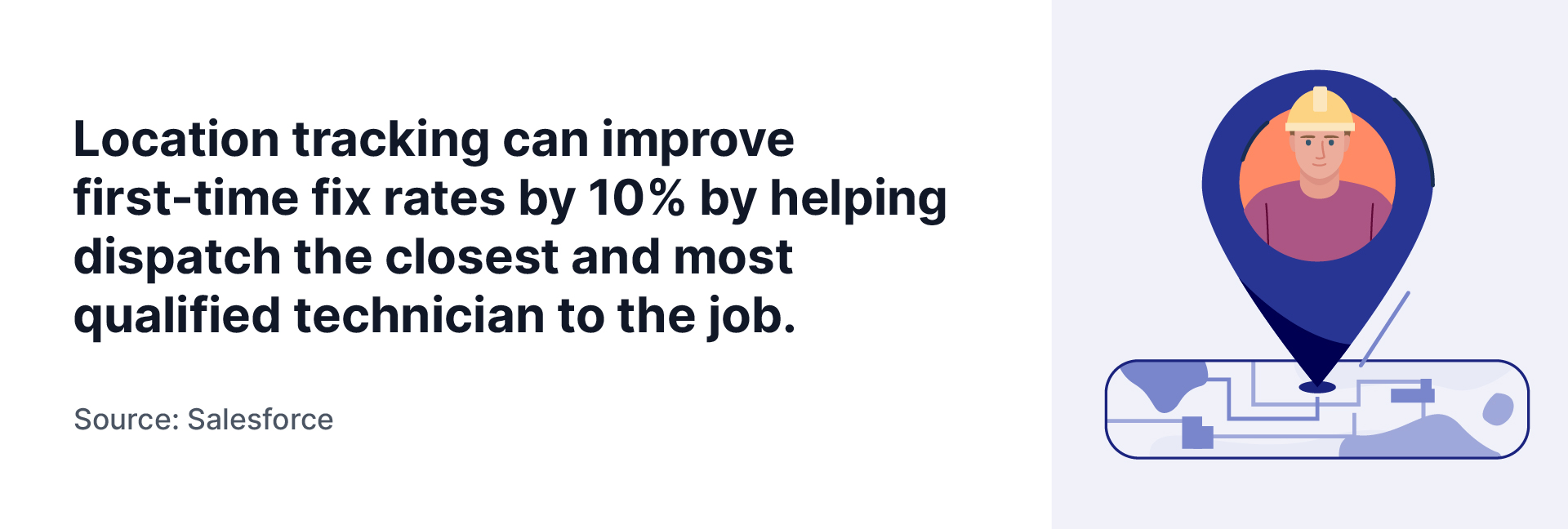
With location tracking, you can instantly see which technician is closest to the customer site, dispatch them to the job ASAP, and keep customers happy. Traffic jams are unavoidable in any field service business. But advanced GPS leverages the power of route optimization, allowing your technicians to take the fastest and most fuel-efficient route.
You can create geo-fencing-enforced workflows and GPS-based routing to make tracking employees’ time spent on the job and on location easy. Once your field teams enter the geo-fence, your customers get an automated ETA alert message—keeping them informed up to the minute.
But it doesn’t stop there:
- Location tracking builds trust and reduces frustration
- Monitor progress, offer real-time support, and foster collaboration
- Analyze past routes, identify areas of improvement, and optimize schedules for maximum productivity.
Job progress tracking:
Remember that time your washing machine flooded the laundry room? You hoped for a quick resolution, but after calling for a technician, the company left you for hours, saying there were “unforeseen complications” and “we’ll get to you as soon as possible.” Your problem wasn’t fixed, and your anxiety was mounting.
Unfortunately, this is a common scenario with field service companies. Lack of transparency leaves customers frustrated and technicians scrambling to get the information they need. But what if there was a way to keep customers informed and minimize their frustration in the process?
After implementing job progress tracking, 60% of field service companies experience increased customer satisfaction. [Source: ServiceMax]
That’s where job progress tracking comes into play. Job progress tracking in field service is a process that involves capturing updates on work orders as technicians complete tasks, making note of materials used, and documenting any issues encountered. It’s like having a real-time journal for each job, providing transparency and valuable information for multiple stakeholders. Here’s what tracking job progress brings to the table.
- Update in real-time: Imagine your technician marking tasks complete as they happen. No more guessing games—notify your stakeholders of progress, knowing exactly when their appliance will be back in action. Adios, anxiety!
- Picture perfect: Snapping photos of completed work, damaged equipment, or job sites captures a clear picture of the situation. This not only helps with accurate diagnosis and repairs but also serves as valuable documentation for both parties.
- Issue intervention: Imagine technicians encountering a hidden gremlin in your washing machine and documenting it with notes. This allows for immediate action and proactive problem-solving, potentially saving you from repeat visits and unnecessary headaches.
Job progress tracking isn’t just about ticking boxes; it’s about empowering your technicians, informing your customers, and turning service calls into success stories. So, ditch the crystal ball and embrace the power of real-time data. Your business, team, and customers will thank you for it!
Benefits of activity tracking
While the numbers paint a compelling picture, the true impact of activity tracking goes far beyond statistics. It’s about fundamentally changing how your field service business operates, unlocking hidden potential, and creating a ripple effect that benefits every aspect of your organization. Let’s explore these transformative benefits:
1. No more Deja Vu increase first-time fix rates
Imagine how good it would make you feel if your technicians could fix every complaint right on their first visit. Activity tracking makes this a reality. Get complete visibility into your entire field operation, from dispatching to tracking job progress, empowering technicians with the necessary information. Imagine them accessing
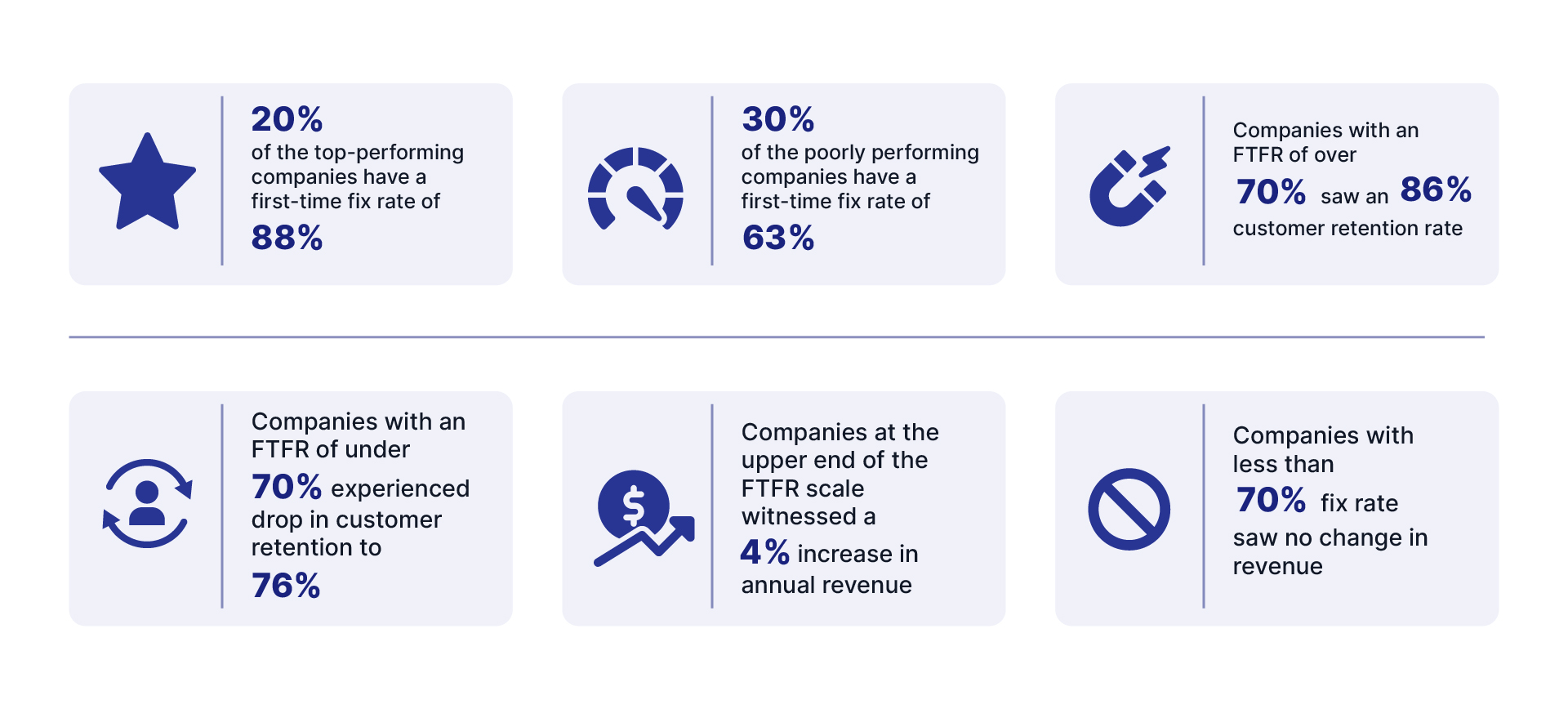
- Knowledge Sharing: Notes and documents from previous visits, enabling them to diagnose and fix recurring issues quickly.
- Real-time Data: Live updates on parts availability, equipment history, and service manuals, turning any challenge into an instant win.
- Remote Support: Expert guidance for complex repairs, minimizing repeat visits and maximizing customer satisfaction.
- Performance Analysis: Historical data that reveals training gaps or recurring issues, leading to targeted skill development and soaring first-time fix rates.
With activity tracking, there are no more repeat visits for the same issue.
2. Reduced customer frustration:
Customers who experience multiple visits for the same issue have a 3x higher chance of switching providers. It’s crucial to ensure you don’t lose your customers just as your technician failed to fix the issue on their first visit.
With activity tracking, there are no more repeat visits for the same issue. Keep your customers informed with real-time updates on technician progress and get triggered notifications once your technician reaches the goe-fenced location. Transparency builds trust and sets realistic expectations, reducing anxiety and fostering a positive relationship.
Nobody likes long waits, especially your customers. Making your customers wait can lead to frustration, and it may not motivate them to repeat sales. With activity tracking, get real-time visibility into every technician location, enabling efficient dispatch and faster response times. Less downtime, more satisfied customers.
3. Reduced Operational Costs:
Poor scheduling and inefficient resource allocation often lead to bloated field service costs. Imagine how much time and money you could save by avoiding unnecessary travel. You can quickly identify the closest available technician for the job with location tracking. This precise scheduling helps you eliminate back-and-forth trips, significantly reducing costs and maximizing your technician’s time on-site.
Furthermore, activity tracking empowers you to allocate resources optimally. You can match technicians with the right skills for every task, ensuring efficient labor utilization (you deliver a service that your customers love. Keep track of every material used across various jobs for accurate inventory management and control, ensuring nothing goes unnoticed or wasted. By aiming for first-time fix rates, you further eliminate repeat visits, saving time, resources, and associated costs. This two-pronged approach of precise scheduling and optimal resource allocation translates to significant cost savings and a streamlined field service operation.
4. Enhanced Customer Satisfaction:
Imagine a customer fuming over a leaky faucet, waiting hours for a technician who gets lost on the way. Nobody likes long waits, especially in field servicing. It not only causes dissatisfaction but also limits them from repeating business— forcing you to acquire new customers relatively at a high cost.
Activity tracking lets you deliver exceptional service that your customers love. You can dispatch the most skilled technician promptly and keep your customers in the loop by sending notifications about the technician’s details and ETA. That translates to happy customers who will spread the word and even repeat business with you. Loyal customers require a significantly lower investment, freeing up resources and boosting your overall profitability.
5. Informed decision-making:
Making informed decisions is no longer a luxury—It’s a necessity! When it comes to workforce management, the benefits of data-driven decision-making are particularly numerous. By leveraging the insights you gained from activity tracking, you can identify and address potential skill gaps within your team, paving the way for a more efficient, effective field service operation.
Activity tracking acts as your very own business oracle, providing a wealth of data that paints a clear picture of your team’s capabilities.
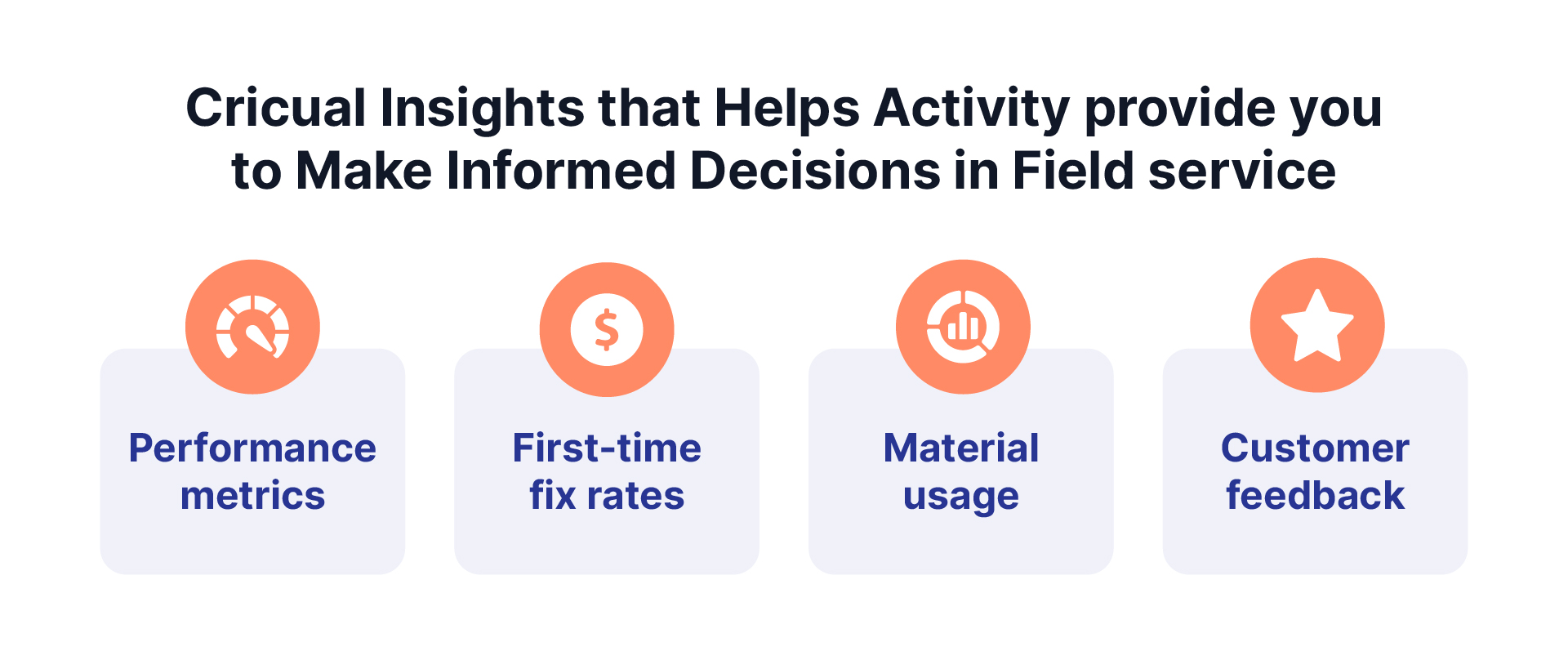
- Performance metrics: Identify areas where technicians consistently fall short, pinpointing potential skill gaps in specific tasks or equipment knowledge.
- First-time fix rates: Low rates highlight technicians who require additional training or upskilling in troubleshooting and problem-solving.
- Material usage: Track patterns that suggest technicians might be using materials inefficiently or incorrectly, indicating a need for training on proper procedures.
- Customer feedback: Analyze customer reviews and satisfaction scores to identify areas where technicians might lack communication skills or require training on specific customer service protocols.
Once you’ve identified the prevailing skill gaps, it’s time for you to take action. With clear and detailed insights, you can make informed decisions to address them, transforming those gaps into opportunities for growth.
Now, you can equip your technicians with the skills they need to excel. Carefully design a training program based on the specific skill gaps identified. Ensure the training program addresses those potential gaps and equips them with the required skills to handle any challenge.
You can also pair experienced technicians with those requiring further development, fostering a culture of knowledge sharing and continuous improvement. Match technicians with the right skills for each job, ensuring optimal utilization of their strengths and minimizing the impact of skill gaps.
Monitor the impact of your interventions, tracking improvements in performance metrics, first-time fix rates, and customer satisfaction. By addressing skill gaps, you’re not just investing in your technicians. You’re investing in your entire business. The benefits ripple outwards, creating a positive impact on every aspect of your operation:
5 Must-have features to look for in a field service activity tracking software
Choosing the right activity-tracking software is like picking the perfect toolbox for your field service team. Beyond the basic hammer and screwdriver, you need specialized tools to get the job done right. Here are five essential features to prioritize:
1. Real-time location tracking
Real-time location tracking enables your businesses to monitor the exact whereabouts of your technicians in the field. With Zuper’s real-time location tracking feature, you can pinpoint the location of every technician on a map, allowing you to respond quickly to service requests based on proximity and efficiently assign tasks to the nearest available personnel.
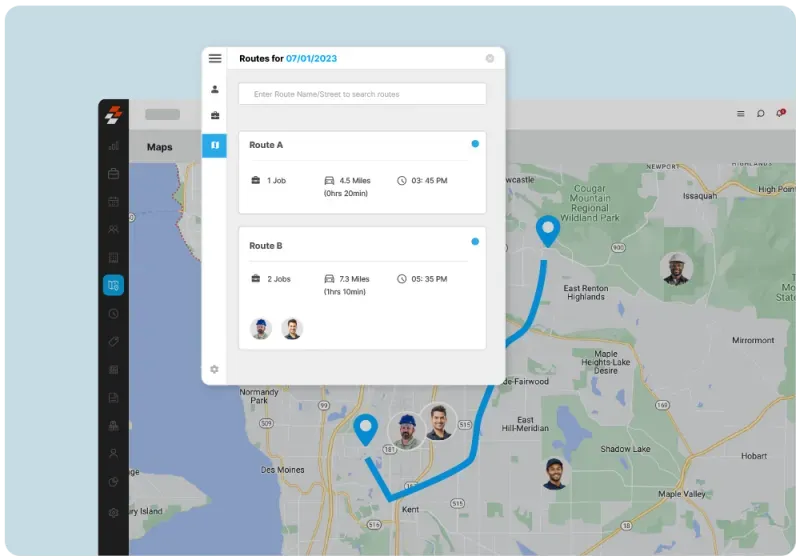
Field service businesses can implement real-time location tracking by deploying the Zuper mobile application on technicians’ devices. The application utilizes GPS technology to provide accurate and up-to-date location information. This ensures businesses can optimize route planning, reduce travel time, and enhance response times.
2. Timesheet management
Accurate timesheet management is crucial for payroll processing, ensuring that technicians are fairly compensated for their work. With Zuper’s timesheet management feature, businesses can track work hours, breaks, and overtime, reducing errors in manual timekeeping and promoting transparency in employee compensation.
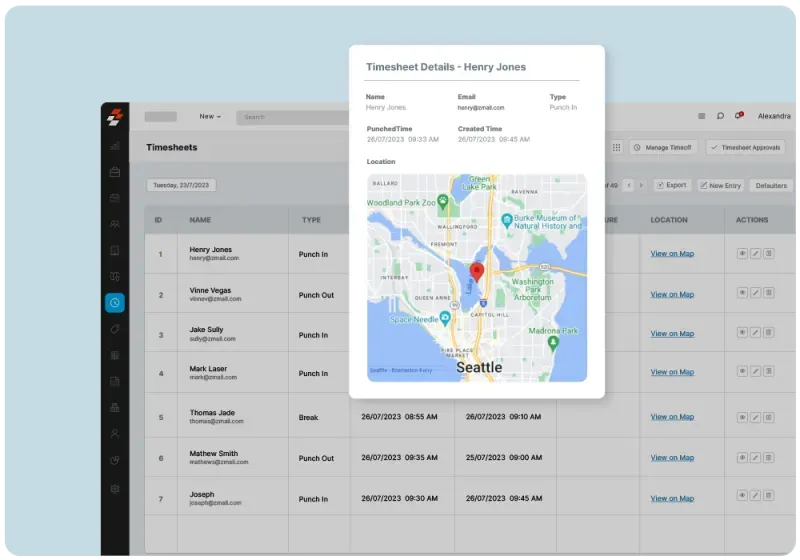
Technicians can use the Zuper mobile app to clock in and out, log breaks, and record work details. The timesheet data is automatically synchronized with the central system, providing managers with real-time insights into labor costs and productivity. This streamlined process saves time, minimizes errors, and ensures accurate compensation.
3. Inventory management
Efficient inventory management is essential for field service businesses to ensure that technicians have the right parts and equipment when on-site. Zuper’s inventory management feature allows businesses to track stock levels, order supplies, and avoid delays in service delivery due to insufficient inventory.
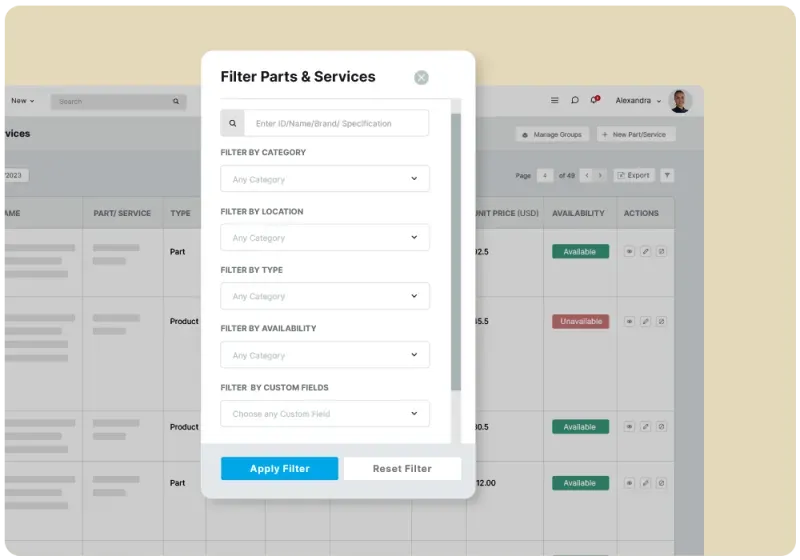
Businesses can use Zuper’s inventory management tools to create and manage a centralized inventory database. The system can be set up to automatically update inventory levels based on field activities, trigger alerts for low stock, and generate reports for better decision-making. This helps in minimizing downtime and improving overall service quality.
4. Task and work order management
Effective task and work order management streamline field service operations by ensuring that service requests are handled promptly and efficiently. With Zuper’s task and work order management features, businesses can create, assign, and track tasks in real-time, enhancing overall workflow organization.
Managers can use Zuper to create work orders and assign them to field technicians based on their skills, availability, and proximity to the job site. Technicians receive notifications on their mobile devices, allowing them to access detailed task information and provide real-time updates on job status. This helps optimize resource allocation and improve customer satisfaction through timely service delivery.
5. Integration capabilities
Integration capabilities allow field service businesses to connect Zuper with other tools and systems used in their organization, leading to a more cohesive and efficient workflow. This ensures that data flows seamlessly between different aspects of the business, reducing manual data entry and minimizing errors.
Zuper offers integration options with various tools, such as CRM systems, billing software, and communication platforms. By integrating Zuper with these systems, businesses can achieve a unified view of customer information, automate invoicing processes, and facilitate seamless communication between field technicians and office staff. This integration enhances overall operational efficiency and ensures a more connected and collaborative work environment.
Conclusion
Traditional field service management struggles with inefficiency and a lack of transparency. Activity tracking software offers a solution by providing real-time insights into your operations. With features like time tracking, location tracking, and job progress tracking, businesses can gain a complete understanding of their field service and optimize workflows. This leads to increased first-time fix rates, reduced customer frustration, better resource allocation, and, ultimately, a boost in customer satisfaction. By implementing activity tracking, field service businesses can empower themselves to thrive in today’s competitive landscape.



